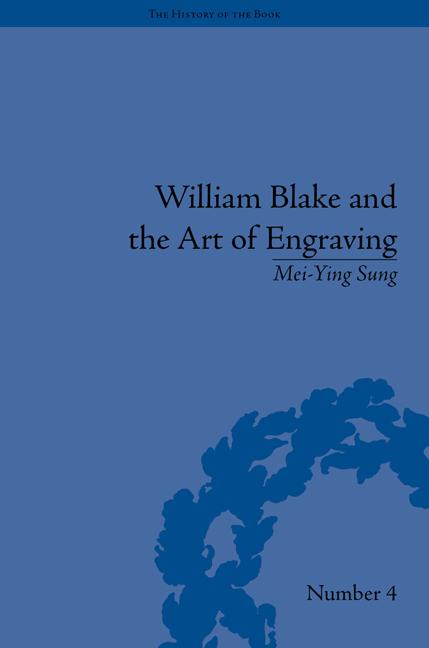Book contents
- Frontmatter
- CONTENTS
- Abbreviation
- List of Figures
- Acknowledgements
- Introduction
- 1 The History of the Theory of Conception and Execution
- 2 The Evidence of Copper Plates
- 3 Blake's Engraved Copper Plates
- 4 Copper Plate Makers in Blake's Time
- 5 Blake's Virgil Woodcuts and the Earliest Re-Engravers
- Conclusion
- Notes
- Works Cited
- Index
Conclusion
- Frontmatter
- CONTENTS
- Abbreviation
- List of Figures
- Acknowledgements
- Introduction
- 1 The History of the Theory of Conception and Execution
- 2 The Evidence of Copper Plates
- 3 Blake's Engraved Copper Plates
- 4 Copper Plate Makers in Blake's Time
- 5 Blake's Virgil Woodcuts and the Earliest Re-Engravers
- Conclusion
- Notes
- Works Cited
- Index
Summary
It was the aim of this book to bring out the importance of Blake's overlooked original copper plates and woodblocks. Close examination of these materials has been the core of its argument, a study of Blake's working practice as an engraver and the raw material of the printing surfaces. My examination in 2000 of the BMPD copper plates of the Illustrations of the Book of Job, especially the marks of repoussage on their versos, was the origin of my analysis tracing the history of these artefacts. Corresponding proof prints prove that most of these marks are indeed the technique of repoussage, a practice engravers used to correct mistakes on the recto of the copper plate. From studying Blake's twenty-two Job copper plates, together with his other surviving plates (mainly in the USA), my examination has come to the conclusion that Blake used the technique of repoussage extensively when he engraved copper plates. While the recent scholars Essick, Phillips and Viscomi, with their exhaustively reconstructed, practice-based, hypotheses about relief etching, have provided compelling accounts of the relief etching process used for the illuminated books, engraving – both on copper and wood – has been relatively neglected.
Although repoussage was a standard technique for Blake's engraver contemporaries, this does not mean there is no need for close examination. My investigations of eighteenth and nineteenth century copper plates by other engravers in major collections such as BMPD, Houghton, NGA, V&A, indicates that Blake's use of repoussage was unusual in its characteristics. Comparison shows the difference between other engravers’ (and etchers’) careful execution and Blake's more daring hand, as someone not afraid of correcting or revising his work.
The significance of these examinations is to emphasize the scholarly role of material studies at a time when, at least as far as Blake's illuminated books are concerned, there has been increasing consideration given to our understanding of relief etching processes where a heightened form of bibliographical inquiry has effectively re-written much of the dating and provenance of these unique works.
- Type
- Chapter
- Information
- William Blake and the Art of Engraving , pp. 165 - 168Publisher: Pickering & ChattoFirst published in: 2014



